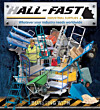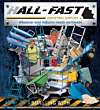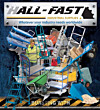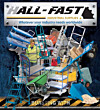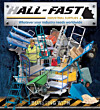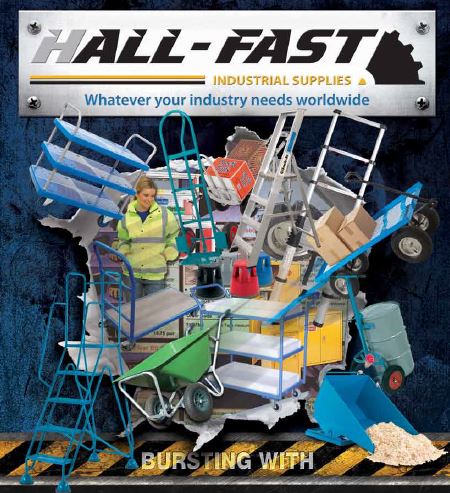
The facilities management industry is experiencing unprecedented transformation as we advance through 2025, driven by the convergence of smart technologies, sustainability imperatives, and evolving workplace expectations. From AI-powered building automation to predictive maintenance systems, the tools and strategies that facility managers rely on are becoming increasingly sophisticated and data-driven. At Hall-Fast, we understand that whatever your industry needs worldwide, effective facilities management requires comprehensive solutions that integrate seamlessly with building operations while supporting organizational objectives.
The Evolution of Facilities Management in 2025
Facilities management market trends feature the dawn of Facility Maintenance 4.0, which involves the integration of advanced technologies including the Internet of Things (IoT), artificial intelligence (AI), machine learning (ML), and big data analytics to optimize the management and maintenance of facilities. This approach enables facilities managers to collect and analyze vast amounts of real-time data, make data-driven decisions, and identify potential issues before they occur.
The infusion of generative AI into workplace management and building automation systems is making it easier for people to access and digest complex insights through natural language query tools. The promise of GenAI to transform facilities management is so significant that 76% of respondents to industry surveys indicate they plan to deploy GenAI to assist with operations and maintenance of workplaces in the coming year.
Technology as the Great Enabler
Technology is helping to bridge the labor gap in facilities management by automating routine tasks and streamlining workflows, allowing facility teams to focus on strategic projects. Digital tools that support remote work, collaboration, and skill development are contributing to a more adaptable workforce, which is essential in today's labor-constrained environment.
The role of facilities managers has evolved significantly, with added functions giving them a more prominent role in making decisions about the buildings and portfolios they're involved with. Workplace management and smart building solutions are helping facilities managers succeed in this expanded role, changing the perception of their job from sitting outside "the room where it happens" to having a seat at the table.
Smart Building Technologies and IoT Integration
The materials and equipment used in facilities management are advancing, leading to stronger, more sustainable buildings. Innovations like self-healing concrete, advanced insulation, and high-performance HVAC systems provide durability and efficiency, lowering long-term maintenance needs.
Sensor Networks and Data Collection
Data from sensors can be collected directly onto building management systems or facility management software, creating comprehensive monitoring networks that provide real-time insights into building performance. IoT adoption across industries is gaining momentum, with the number of IoT devices expected to reach 29 billion by 2030, up from close to 10 billion currently.
Facility managers can leverage IoT potential in multiple ways:
Air Quality Management: Air quality sensors help gauge the difference between outdoor and indoor air quality, efficiently driving maintenance of equipment linked to air quality index measurements like HVAC systems.
Energy Monitoring: Smart sensors track energy consumption patterns in real-time, identifying inefficiencies and suggesting adjustments to help facilities lower energy usage without sacrificing output.
Occupancy Detection: Advanced occupancy monitoring systems track space utilization, enabling optimal space planning and resource allocation.
Equipment Performance: Continuous monitoring of equipment performance parameters to predict maintenance needs and prevent failures.
Building Management System Integration
Modern building management systems integrate multiple technologies to create comprehensive facility oversight:
Centralized Control: Unified control systems that manage HVAC, lighting, security, and other building systems from a single platform.
Automated Optimization: Systems that automatically adjust building parameters based on occupancy, weather conditions, and energy costs.
Remote Monitoring: Capability to monitor and control building systems from anywhere, enabling efficient management of multiple facilities.
Data Analytics: Advanced analytics that identify trends, predict needs, and optimize building performance.
Artificial Intelligence and Machine Learning Applications
AI-powered predictive maintenance solutions are becoming the core of facility management trends, thanks to equipment monitoring tools and data analytics. Facility management increasingly depends on intelligent tools to help track asset performance and predict potential equipment failures, enabling managers to be more proactive and responsive to situations.
Predictive Maintenance Revolution
Predictive maintenance and smart production planning allow facilities to minimize material waste and prevent equipment failures. By leveraging the power of predictive maintenance, facilities management aims to improve the reliability and efficiency of building systems while reducing maintenance costs and enhancing overall building performance.
Key benefits of AI-driven predictive maintenance include:
Reduced Downtime: Prediction of equipment failures before they occur, allowing for scheduled maintenance during non-critical periods.
Cost Optimization: Optimal timing of maintenance activities to minimize costs while maximizing equipment life.
Resource Efficiency: Better allocation of maintenance resources based on actual needs rather than predetermined schedules.
Performance Enhancement: Continuous optimization of equipment performance based on data analysis and machine learning insights.
Intelligent Building Automation
AI systems are revolutionizing building automation by providing:
Adaptive Learning: Systems that learn from occupancy patterns, weather conditions, and usage data to optimize building operations automatically.
Energy Optimization: Intelligent management of HVAC, lighting, and other systems to minimize energy consumption while maintaining comfort.
Anomaly Detection: Automatic identification of unusual patterns that may indicate equipment problems or security issues.
Automated Responses: Systems that can automatically respond to changing conditions without human intervention.
Sustainability and Environmental Management
Since buildings are responsible for nearly 40% of global energy-related CO2 emissions, technology plays a pivotal role in achieving sustainability. Implementing energy-saving plans is crucial for reducing facility operating costs, and managers can accomplish this by using context-aware technology to monitor occupancy levels and real-time usage patterns.
Energy Management Systems
Advanced energy management systems provide comprehensive control over facility energy consumption:
Real-Time Monitoring: Continuous tracking of energy usage across all building systems and spaces.
Demand Response: Automatic adjustment of energy consumption based on utility demand charges and grid conditions.
Renewable Integration: Seamless integration of solar, wind, and other renewable energy sources into building systems.
Energy Storage: Management of battery storage systems to optimize energy usage and reduce costs.
Sustainable Operations
Modern facilities management embraces sustainable operations through:
Waste Reduction: Comprehensive litter bins and waste management storage equipment that support recycling, composting, and waste minimization programs.
Water Conservation: Advanced water management systems that monitor usage, detect leaks, and optimize consumption.
Green Cleaning: Environmentally friendly cleaning products and processes that maintain hygiene while minimizing environmental impact.
Sustainable Materials: Selection of building materials, furniture, and supplies that minimize environmental impact throughout their lifecycle.
Proactive Maintenance Strategies
The benefits of proactive maintenance, whether preventive or predictive, are clear—there's no other way to solve issues before clients become aware of them. As facility managers embrace the latest technology and start collecting data, they can achieve predictability that enables maintenance plans to become more proactive and incisive.
Data-Driven Maintenance Planning
Modern maintenance strategies leverage data analytics to:
Optimize Schedules: Use of data to determine optimal maintenance intervals based on actual equipment condition rather than predetermined schedules.
Resource Planning: Efficient allocation of maintenance resources based on predicted needs and priorities.
Cost Control: Minimization of maintenance costs through optimal timing and resource utilization.
Quality Assurance: Consistent maintenance quality through standardized procedures and performance monitoring.
Equipment Lifecycle Management
Comprehensive equipment lifecycle management includes:
Asset Tracking: Complete documentation of equipment specifications, maintenance history, and performance data.
Condition Monitoring: Continuous assessment of equipment condition to optimize maintenance timing.
Replacement Planning: Data-driven decisions about equipment replacement based on cost-benefit analysis.
Performance Optimization: Continuous improvement of equipment performance through maintenance optimization.
Workplace Experience and Human-Centric Design
User experience has become the greatest trend affecting facility management, with human-centric approaches growing even more prominent. The question for facility managers is how to provide great experiences in hybrid workplaces where occupancy patterns are constantly changing.
Hybrid Workplace Support
Modern facilities must accommodate hybrid work patterns through:
Flexible Spaces: Office furniture and room dividers that can be quickly reconfigured to support different work modes.
Booking Systems: Digital systems that enable employees to reserve spaces and resources as needed.
Connectivity Support: Comprehensive office equipment that supports seamless connectivity for remote and in-person collaboration.
Amenity Management: Canteen furniture and social spaces that support employee wellbeing and collaboration.
Service Request Management
Modern facility management requires streamlined service request processes:
Digital Platforms: User-friendly systems that enable employees to report issues and request services easily.
Automated Routing: Intelligent systems that route requests to appropriate personnel based on type and priority.
Real-Time Updates: Communication systems that keep requesters informed of service status and completion.
Quality Feedback: Systems that capture user feedback to continuously improve service quality.
Advanced Materials and Construction Technologies
The materials and equipment used in facilities management are advancing rapidly, leading to stronger, more sustainable buildings. These innovations provide durability and efficiency while lowering long-term maintenance needs.
Next-Generation Building Materials
Advanced building materials include:
Self-Healing Concrete: Concrete that can repair small cracks automatically, extending structure life and reducing maintenance needs.
Advanced Insulation: High-performance insulation materials that dramatically improve energy efficiency.
Smart Glass: Windows that can automatically adjust transparency and thermal properties based on conditions.
Sustainable Composites: Building materials made from recycled and renewable sources that provide superior performance.
Modular Construction Techniques
Modular construction methods provide:
Reduced Waste: Precise manufacturing processes that minimize material waste.
Faster Installation: Prefabricated components that reduce construction time and disruption.
Quality Control: Factory-controlled manufacturing that ensures consistent quality.
Adaptability: Modular systems that can be reconfigured as needs change.
Digital Twin Technology and Virtual Building Management
Digital twin technology has emerged as a transformative solution for facility managers, offering a seamless collaboration platform and real-time access to data while providing a holistic view of the facility. When needs are rapidly changing, digital twins help managers with better space planning, maintenance, and overall property portfolio management.
Virtual Building Models
Digital twins provide comprehensive virtual representations of physical buildings:
Real-Time Synchronization: Virtual models that reflect real-time conditions and changes in physical buildings.
Predictive Modeling: Simulation capabilities that predict the impact of changes before implementation.
Optimization Analysis: Analysis of different scenarios to identify optimal building configurations and operations.
Historical Data: Complete historical records that support trend analysis and decision-making.
Operational Applications
Digital twins support multiple operational applications:
Space Planning: Virtual space planning that optimizes utilization and supports organizational changes.
Maintenance Planning: Virtual maintenance planning that minimizes disruption and optimizes resource allocation.
Energy Optimization: Virtual energy modeling that identifies optimization opportunities.
Emergency Planning: Virtual emergency simulation that improves preparedness and response capabilities.
Security and Access Control
Modern facilities require comprehensive security solutions that protect people, assets, and information while supporting operational efficiency. Advanced security systems integrate with building management platforms to provide comprehensive protection.
Integrated Security Systems
Modern security systems provide:
Access Control: Advanced access control systems that manage entry to different areas based on user credentials and permissions.
Surveillance Systems: Comprehensive video surveillance with intelligent analytics that can detect unusual activities.
Alarm Systems: Integrated alarm systems that provide immediate notification of security breaches or emergencies.
Emergency Response: Automated emergency response systems that can initiate appropriate responses to different types of incidents.
Cybersecurity Considerations
As buildings become more connected, cybersecurity becomes increasingly important:
Network Security: Protection of building networks from cyber threats and unauthorized access.
Data Protection: Secure storage and transmission of sensitive building and occupant data.
System Isolation: Isolation of critical building systems to prevent cyber attacks from affecting essential functions.
Regular Updates: Continuous updates and patches to address emerging security threats.
Cleaning and Maintenance Equipment
Professional cleaning and maintenance remain fundamental to effective facilities management. Modern cleaning equipment and techniques support both efficiency and sustainability objectives while maintaining high standards of cleanliness and hygiene.
Advanced Cleaning Technologies
Modern cleaning systems provide:
Automated Cleaning: Robotic cleaning systems that can operate independently, reducing labor costs and improving consistency.
Eco-Friendly Solutions: Cleaning products and processes that minimize environmental impact while maintaining effectiveness.
Data-Driven Optimization: Cleaning schedules and methods optimized based on actual usage patterns and needs.
Health and Safety: Cleaning approaches that prioritize occupant health and safety, particularly important in post-pandemic environments.
Equipment Integration
Professional cleaning equipment integrates with facility management systems to provide:
Schedule Coordination: Cleaning schedules that coordinate with building occupancy and other activities.
Resource Management: Efficient allocation of cleaning resources based on actual needs and priorities.
Quality Monitoring: Continuous monitoring of cleaning quality and effectiveness.
Cost Control: Optimization of cleaning costs through efficient resource utilization and process improvement.
Outdoor Facilities Management
Comprehensive facilities management extends beyond indoor spaces to include outdoor areas that support employee wellbeing and organizational operations. These outdoor spaces require specialized equipment and management approaches.
Outdoor Comfort and Functionality
Well-designed outdoor spaces enhance facilities through:
Weather Protection: Smoking shelters and other weather protection solutions that support outdoor activities in various conditions.
Seating Areas: Seating and benches that provide comfortable outdoor spaces for relaxation and informal meetings.
Bicycle Infrastructure: Cycle shelters and racks that support sustainable transportation and employee wellness initiatives.
Landscaping Integration: Outdoor furniture and infrastructure that integrate with landscaping and stormwater management systems.
Maintenance and Sustainability
Outdoor facilities management emphasizes:
Durable Construction: Outdoor equipment designed to withstand weather and heavy use while maintaining appearance and functionality.
Low Maintenance: Solutions that minimize ongoing maintenance requirements while providing long service life.
Environmental Integration: Outdoor facilities that complement natural environments and support sustainability objectives.
Accessibility: Outdoor spaces designed to be accessible to all users regardless of physical capabilities.
Storage and Organization Solutions
Effective facilities management requires comprehensive shelving and storage solutions that support organization, efficiency, and space optimization. Modern storage systems integrate with digital management platforms to provide complete inventory control.
Intelligent Storage Systems
Advanced storage solutions provide:
Automated Inventory: Systems that automatically track inventory levels and usage patterns.
Optimized Layout: Storage configurations optimized for accessibility and efficiency.
Space Utilization: Maximum utilization of available space through efficient design and organization.
Integration Capabilities: Storage systems that integrate with procurement and inventory management systems.
Specialized Storage Requirements
Different facilities have unique storage needs:
Document Storage: Secure, climate-controlled storage for important documents and records.
Equipment Storage: Specialized storage for maintenance tools, cleaning equipment, and other facility management resources.
Supply Storage: Efficient storage for consumables, replacement parts, and other supplies.
Flexible Storage: Adaptable storage systems that can be reconfigured as needs change.
Communication and Display Systems
Effective communication is essential for modern facilities management, requiring comprehensive display systems that support information sharing, wayfinding, and emergency communication.
Information Management
Modern display systems provide:
Real-Time Information: Dynamic displays that provide current information about building conditions, events, and services.
Wayfinding: Interactive wayfinding systems that help occupants navigate complex facilities.
Emergency Communication: Emergency communication systems that can provide critical information during emergencies.
Integration: Display systems that integrate with building management and communication platforms.
Digital Signage Networks
Comprehensive digital signage networks enable:
Centralized Management: Centralized control of multiple displays throughout facilities.
Content Scheduling: Automated content scheduling based on time, events, and other criteria.
Interactive Capabilities: Touch-screen displays that enable user interaction and feedback.
Analytics: Tracking of display usage and effectiveness to optimize content and placement.
Integrated Facilities Management
Leveraging facility management technology, especially through Integrated Facilities Management (IFM), helps overcome operational limitations by building unified systems for managing all strategies. This consolidation allows businesses to improve oversight and coordination while reducing costs.
Unified Management Platforms
IFM platforms provide:
Single Vendor Coordination: Partnering with single vendors who understand business goals and missions rather than engaging with multiple vendors.
Consolidated Oversight: Delegating oversight tasks to key members to consolidate management responsibilities and improve response times.
Technology Integration: Empowering the workforce by equipping them with technology so that consistent productivity levels are maintained.
Process Optimization: Overcoming process redundancies by preventing the building of silos among functions.
Service Delivery Optimization
Integrated facilities management optimizes service delivery through:
Standardized Processes: Consistent service delivery processes across all facility functions.
Performance Monitoring: Comprehensive monitoring of service quality and performance metrics.
Continuous Improvement: Regular review and improvement of service delivery processes.
Cost Management: Optimization of service costs through efficient resource allocation and process improvement.
Robotic Process Automation
Robotic Process Automation (RPA) has already made its way into simpler functions like room booking, notification delivery, and performance reporting. Now facility managers are striving to penetrate it into more complex business functions and leverage it for sustainability and security advantages.
Automation Applications
RPA applications in facilities management include:
Administrative Tasks: Automated processing of work orders, scheduling, and reporting functions.
Security Monitoring: Bots that can help locate suspicious objects inside facilities and remotely report these to supervisors.
Safety Inspections: Virtual auto audits that inspect buildings, HVAC, fire, and electrical equipment at regular intervals to report on safety status.
Maintenance Scheduling: Automated scheduling of maintenance activities based on equipment condition and usage patterns.
Advanced Automation
More sophisticated automation includes:
Intelligent Routing: Automated routing of service requests and work orders based on priority and resource availability.
Predictive Analytics: Automated analysis of building data to predict maintenance needs and optimize operations.
Resource Optimization: Automated allocation of resources based on demand patterns and availability.
Quality Assurance: Automated quality checks and compliance monitoring.
Workforce Development and Skills Management
There wasn't such a labor shortage crisis as the current one since both World Wars. The perfect storm of rapid aging of the Western population, COVID-19 popularizing remote work and early retirement, and emergent trends such as quiet quitting have brought the labor market to its knees.
Addressing Labor Shortages
Strategies for addressing workforce challenges include:
Technology Leverage: Using technology to augment human capabilities and reduce dependence on manual labor.
Skills Development: Comprehensive training programs that develop necessary skills for modern facilities management.
Flexible Workforce: Utilization of contractors and flexible staffing models to address skill shortages.
Automation Integration: Strategic automation of routine tasks to allow human workers to focus on higher-value activities.
Professional Development
Modern facilities management requires continuous professional development:
Digital Skills: Training in digital tools and technologies that are becoming essential for facility management.
Technical Expertise: Development of technical skills needed to manage increasingly complex building systems.
Leadership Development: Leadership training to prepare facility managers for expanded roles and responsibilities.
Certification Programs: Professional certification programs that ensure competency and maintain standards.
Hall-Fast: Your Comprehensive Facilities Management Partner
At Hall-Fast, we recognize that effective facilities management requires comprehensive solutions that integrate seamlessly with building operations while supporting organizational objectives. Our extensive product range and global expertise position us as the ideal partner for facilities managers seeking to implement advanced technologies and sustainable practices.
Complete Infrastructure Solutions
Our comprehensive industrial and commercial equipment range supports every aspect of modern facilities management:
Building Systems Support: Equipment and components that support HVAC, electrical, and mechanical building systems.
Technology Infrastructure: Products that support the implementation of smart building technologies and IoT systems.
Safety and Security: Comprehensive safety and security solutions that protect people and assets.
Maintenance Equipment: Professional tools and equipment that support efficient facility maintenance and operations.
Specialized Product Categories
Hall-Fast's specialized product categories address specific facilities management needs:
Office and Educational Furniture: Complete office and educational furniture equipment solutions that create productive work and learning environments.
Environmental Management: Litter bins and waste management solutions that support sustainability and cleanliness objectives.
Outdoor Facilities: Outbuildings and outdoor equipment that extend facility management beyond indoor spaces.
Supporting Supplies: Consumables and supplies that keep facilities operating efficiently.
Financial Management and Cost Optimization
Effective facilities management requires careful attention to financial performance and cost optimization. Modern facility management approaches use data analytics and smart technologies to identify cost-saving opportunities while maintaining or improving service quality.
Cost Control Strategies
Advanced cost control in facilities management includes:
Energy Cost Management: Smart energy management systems that reduce consumption and optimize utility costs.
Predictive Maintenance: Maintenance strategies that minimize costs by preventing failures and optimizing maintenance timing.
Space Optimization: Efficient space utilization that reduces real estate costs while maintaining functionality.
Resource Efficiency: Optimal allocation of resources based on actual needs and usage patterns.
Performance Measurement
Comprehensive performance measurement systems track:
Key Performance Indicators: Metrics that measure facility performance across multiple dimensions including cost, quality, and satisfaction.
Benchmarking: Comparison with industry standards and best practices to identify improvement opportunities.
Return on Investment: Analysis of investment returns from facility improvements and technology implementations.
Lifecycle Costs: Comprehensive analysis of total cost of ownership for facility assets and systems.
Regulatory Compliance and Standards
Modern facilities must comply with increasingly complex regulatory requirements covering safety, environmental protection, accessibility, and energy efficiency. Facility managers must stay current with evolving regulations while implementing systems that ensure ongoing compliance.
Compliance Management
Effective compliance management includes:
Regulatory Tracking: Systems that track changing regulations and ensure timely compliance updates.
Documentation Systems: Comprehensive documentation of compliance activities and performance.
Audit Preparation: Regular self-audits and preparation for regulatory inspections.
Training Programs: Staff training on compliance requirements and procedures.
Standards Implementation
Implementation of relevant standards includes:
Safety Standards: Comprehensive safety programs that exceed minimum regulatory requirements.
Environmental Standards: Environmental management systems that minimize impact and ensure compliance.
Quality Standards: Quality management systems that ensure consistent service delivery.
Accessibility Standards: Ensuring facilities are accessible to all users regardless of physical capabilities.
Emergency Preparedness and Business Continuity
Modern facilities management includes comprehensive emergency preparedness and business continuity planning. These programs ensure that facilities can continue to operate during emergencies and recover quickly from disruptions.
Emergency Planning
Comprehensive emergency planning includes:
Risk Assessment: Identification and assessment of potential emergency scenarios and their impact.
Response Procedures: Detailed procedures for responding to different types of emergencies.
Communication Systems: Emergency communication systems that can reach all occupants quickly and effectively.
Training and Drills: Regular training and emergency drills to ensure preparedness.
Business Continuity
Business continuity planning addresses:
Critical Systems: Identification and protection of critical building systems and functions.
Backup Systems: Redundant systems that can maintain operations during primary system failures.
Recovery Planning: Detailed plans for recovering from various types of disruptions.
Vendor Management: Coordination with vendors and service providers to ensure continuity of critical services.
Technology Implementation and Change Management
Successfully implementing new technologies in facilities management requires careful change management that addresses both technical and human factors. Organizations must plan for training, process changes, and cultural adaptation.
Implementation Strategies
Effective technology implementation includes:
Phased Rollout: Gradual implementation that allows for learning and adjustment.
Pilot Programs: Small-scale pilots that test technologies before full deployment.
Training Programs: Comprehensive training that ensures users can effectively utilize new technologies.
Change Communication: Clear communication about changes and their benefits to gain user acceptance.
Success Factors
Key factors for successful technology implementation include:
Leadership Support: Strong leadership commitment to technology initiatives and change management.
User Engagement: Active involvement of end users in selection and implementation processes.
Process Integration: Integration of new technologies with existing processes and workflows.
Continuous Improvement: Ongoing optimization based on user feedback and performance data.
Data Management and Analytics
Modern facilities management generates vast amounts of data that can be used to optimize operations, predict needs, and improve decision-making. Effective data management requires systems that can collect, store, analyze, and present data in useful formats.
Data Collection
Comprehensive data collection includes:
Sensor Networks: IoT sensors that continuously collect data on building performance and conditions.
User Feedback: Systems that capture user feedback and satisfaction data.
Performance Metrics: Continuous tracking of operational performance across all facility functions.
External Data: Integration of external data such as weather, energy costs, and regulatory requirements.
Analytics Applications
Data analytics applications in facilities management include:
Predictive Analytics: Prediction of equipment failures, maintenance needs, and space requirements.
Optimization Analytics: Analysis that identifies opportunities to optimize operations and reduce costs.
Performance Analytics: Continuous monitoring of performance against targets and benchmarks.
Trend Analysis: Long-term trend analysis that supports strategic planning and decision-making.
Global Facilities Management
Organizations with multiple facilities across different regions face unique challenges in maintaining consistent standards while adapting to local requirements. Global facilities management requires standardized approaches combined with local flexibility.
Standardization Benefits
Standardized facilities management provides:
Consistent Standards: Uniform service quality and operational standards across all locations.
Cost Efficiency: Economies of scale in procurement, training, and system implementation.
Best Practice Sharing: Sharing of best practices and lessons learned across locations.
Centralized Oversight: Centralized monitoring and management of global facility portfolios.
Local Adaptation
Local adaptation requirements include:
Regulatory Compliance: Adaptation to local regulations and compliance requirements.
Cultural Considerations: Consideration of local cultures and work practices.
Climate Adaptation: Adaptation to local climate conditions and environmental factors.
Supply Chain Management: Utilization of local suppliers and service providers where appropriate.
Future Trends and Innovations
Looking ahead, several trends will continue to shape facilities management:
Artificial Intelligence Evolution
AI will become increasingly sophisticated in facilities management applications:
Natural Language Processing: AI systems that can understand and respond to natural language queries about building conditions and services.
Autonomous Building Management: Fully autonomous building systems that can manage most operations without human intervention.
Predictive Optimization: AI systems that can predict and optimize building performance across multiple variables simultaneously.
Integrated Intelligence: AI systems that integrate data from multiple buildings and systems to optimize portfolio performance.
Sustainability Advancement
Sustainability will become increasingly central to facilities management:
Carbon Neutrality: Building operations that achieve net-zero carbon emissions through efficiency and renewable energy.
Circular Economy: Facilities management approaches that minimize waste and maximize resource reuse.
Biodiversity Integration: Building designs and operations that support local ecosystems and biodiversity.
Social Sustainability: Facilities management that supports social equity and community wellbeing.
Technology Integration
Technology integration will become more seamless and comprehensive:
5G Connectivity: High-speed wireless connectivity that enables real-time data exchange and control.
Edge Computing: Local computing capabilities that enable real-time processing of building data.
Augmented Reality: AR systems that support maintenance, training, and building navigation.
Digital Twins Evolution: More sophisticated digital twins that provide comprehensive building simulation and optimization.
Industry-Specific Applications
Different industries have unique facilities management requirements that drive specialized approaches and solutions:
Healthcare Facilities
Healthcare facilities require specialized management approaches:
Infection Control: Comprehensive cleaning and air quality management to prevent disease transmission.
Medical Equipment: Specialized maintenance and management of medical equipment and systems.
Regulatory Compliance: Strict compliance with healthcare regulations and accreditation requirements.
Emergency Preparedness: Enhanced emergency preparedness for medical emergencies and disasters.
Educational Institutions
Educational facilities have unique requirements:
Student Safety: Comprehensive safety and security measures to protect students and staff.
Technology Infrastructure: Robust technology infrastructure to support modern educational approaches.
Flexible Spaces: Adaptable spaces that can support different educational activities and changing enrollment.
Energy Efficiency: Cost-effective operations that minimize energy costs while maintaining comfortable learning environments.
Manufacturing Facilities
Manufacturing facilities require specialized management:
Equipment Maintenance: Comprehensive maintenance of production equipment to minimize downtime.
Safety Management: Strict safety protocols to protect workers in industrial environments.
Environmental Compliance: Compliance with environmental regulations related to emissions and waste.
Efficiency Optimization: Continuous optimization of facility operations to support production efficiency.
Return on Investment and Value Creation
Facilities management investments must demonstrate clear value through improved efficiency, reduced costs, enhanced productivity, and better user satisfaction. Measuring and communicating this value is essential for securing continued investment in facility improvements.
Value Measurement
Comprehensive value measurement includes:
Cost Savings: Direct cost savings from improved efficiency and reduced waste.
Productivity Gains: Improved user productivity through better facilities and services.
Risk Reduction: Reduced risks of equipment failures, safety incidents, and regulatory violations.
Satisfaction Improvement: Enhanced user satisfaction and improved retention of tenants or employees.
Investment Justification
Effective investment justification includes:
Business Case Development: Comprehensive business cases that demonstrate the value of facility investments.
ROI Analysis: Detailed return on investment analysis that considers all costs and benefits.
Benchmark Comparison: Comparison with industry benchmarks to demonstrate competitive advantage.
Long-term Value: Analysis of long-term value creation through improved facility performance.
Conclusion: Leading the Facilities Management Revolution
The facilities management revolution of 2025 represents a fundamental transformation in how we approach building operations, user experience, and organizational support. The integration of smart technologies, sustainability practices, and human-centric design is creating unprecedented opportunities to enhance facility performance while reducing costs and environmental impact.
Hall-Fast stands at the forefront of this transformation, providing the comprehensive solutions, expertise, and support needed to implement successful facilities management initiatives. Our commitment to innovation, quality, and customer success ensures that organizations can navigate the complex landscape of modern facilities management with confidence.
The journey toward advanced facilities management requires more than just technology implementation—it demands partnerships with suppliers who understand the unique challenges and opportunities of modern building operations. By choosing Hall-Fast as your facilities management partner, you gain access to not only the latest products and technologies but also the expertise and support needed to implement them successfully.
Whether you're upgrading existing facilities or implementing comprehensive new systems, Hall-Fast's extensive product range and global expertise provide the foundation for success. From basic fasteners and small components to advanced building systems, from essential tools to comprehensive safety solutions, we provide the complete range of products needed for effective facilities management.
Contact us today to discuss how we can support your facilities management objectives and help you implement the technologies and practices that will drive success in 2025 and beyond. Our team of experts is ready to help you assess your needs, identify opportunities, and develop implementation strategies that deliver measurable results.
The future of facilities management is being shaped by the decisions organizations make today. By partnering with Hall-Fast, you invest in solutions that combine cutting-edge technology with proven reliability and performance. Whatever your industry needs worldwide, we're here to help you create facilities that support productivity, sustainability, and user satisfaction.
Through our extensive network of leading brands and comprehensive support services, we ensure that your facilities management initiatives have access to the highest quality products and systems available. Our track record of excellence, recognized through various awards, demonstrates our commitment to delivering solutions that make a real difference in facility performance.
Learn more about Hall-Fast and discover how our commitment to excellence has established us as a trusted partner for organizations worldwide. Together, we can create facilities that leverage the latest technologies while maintaining the reliability, efficiency, and sustainability that drive long-term success.
Our commitment extends bey



